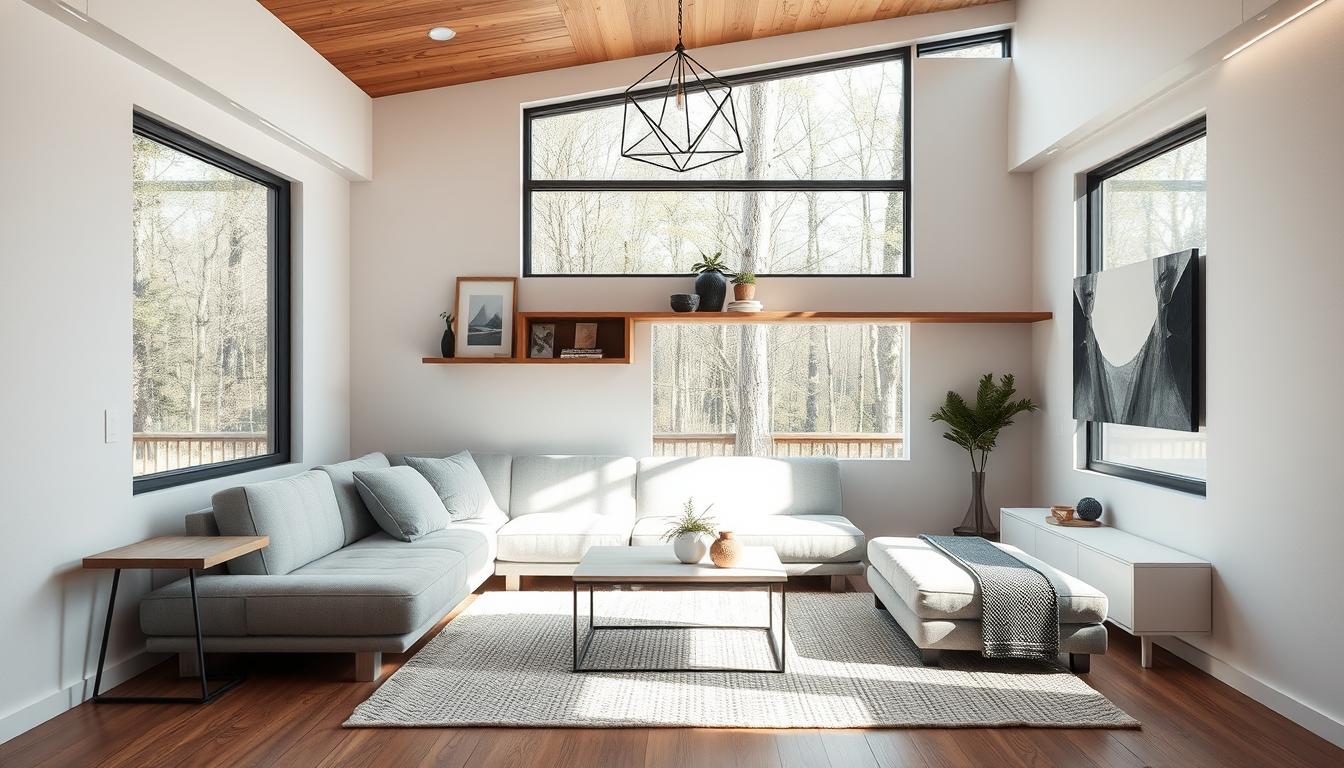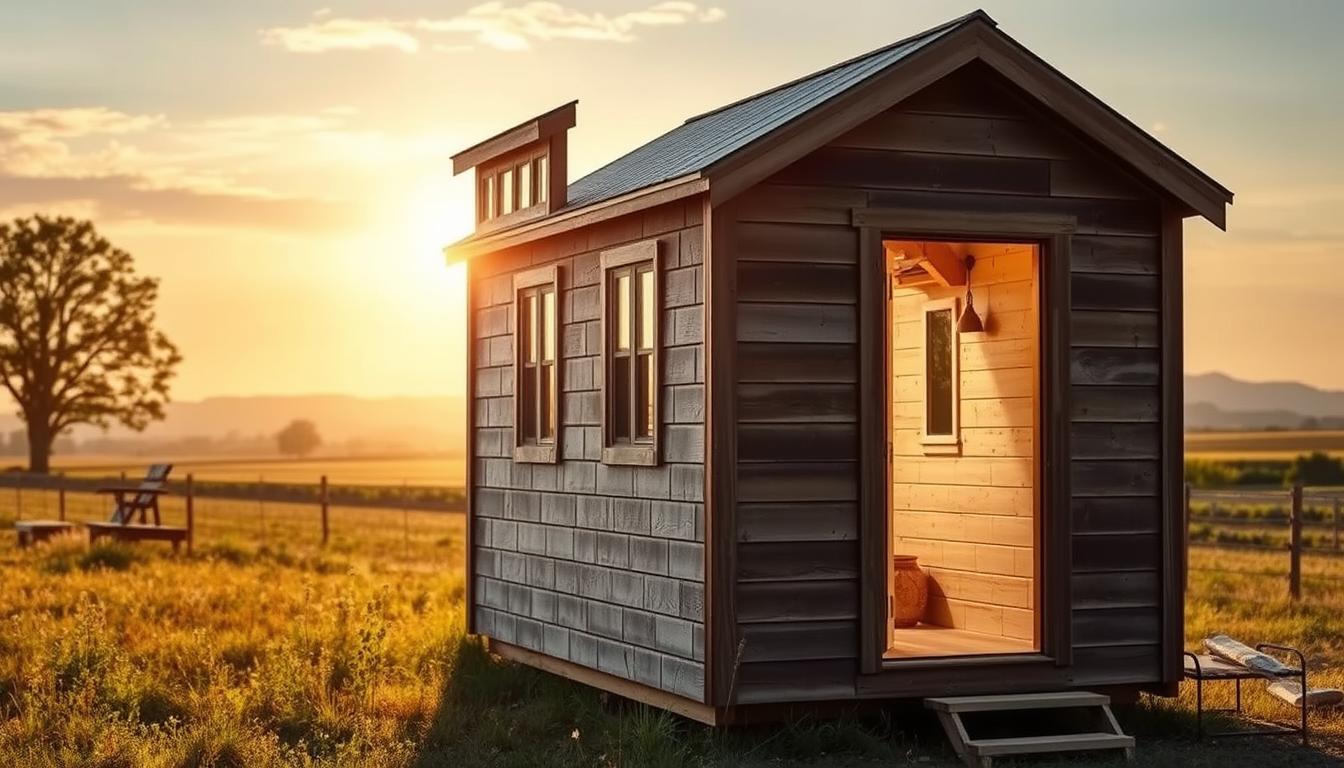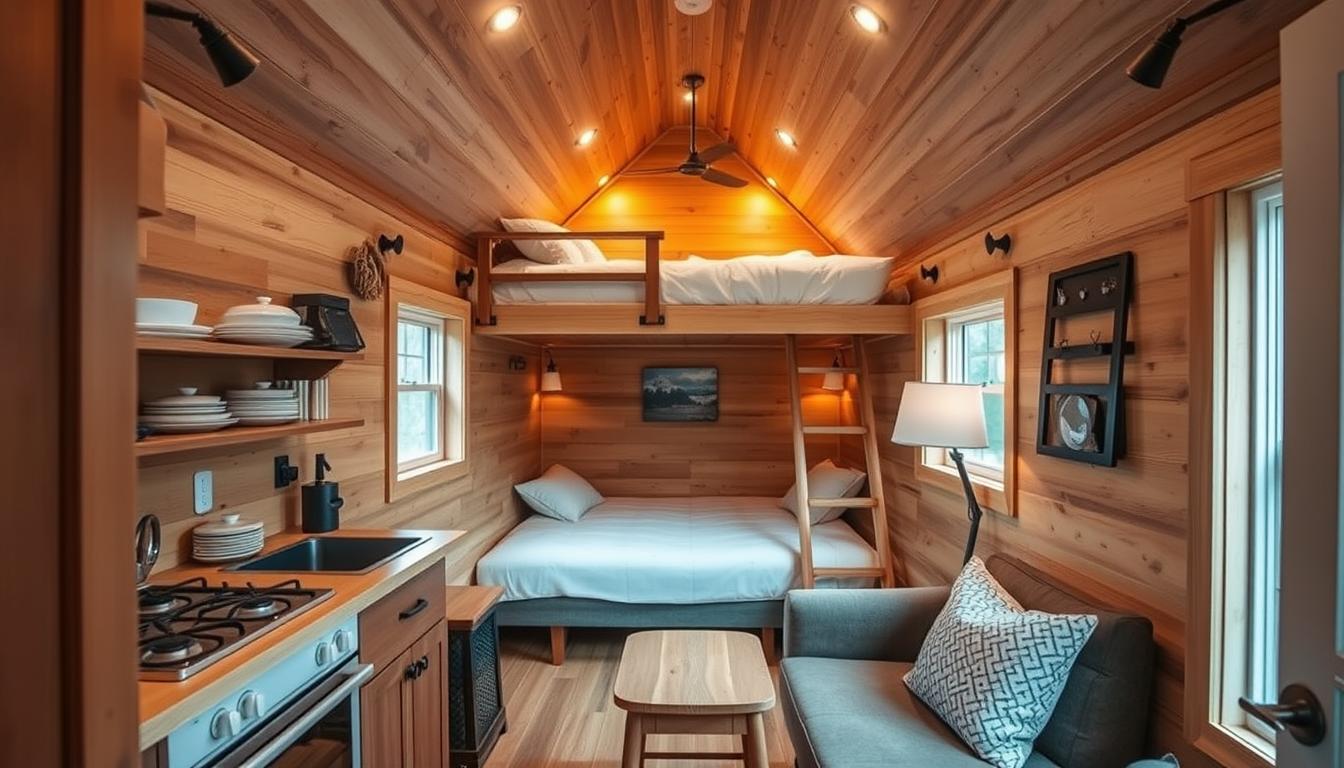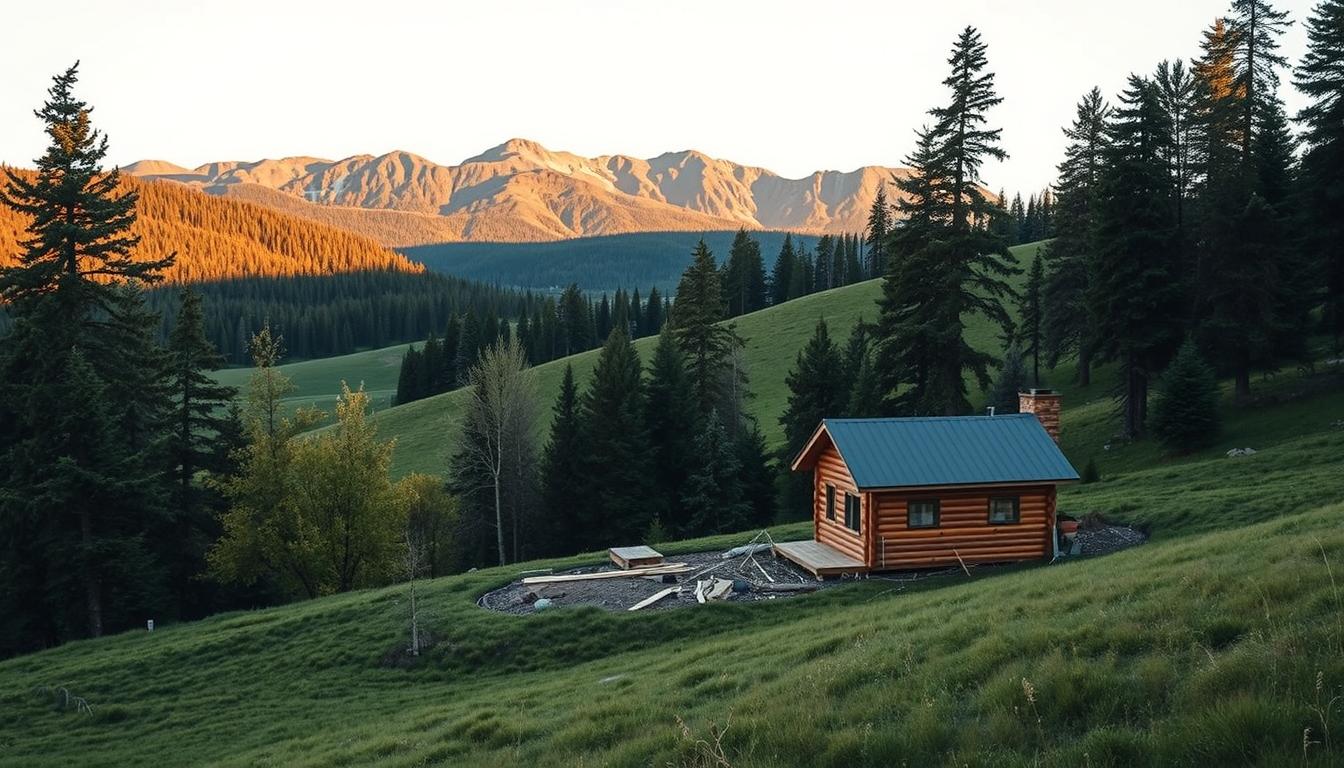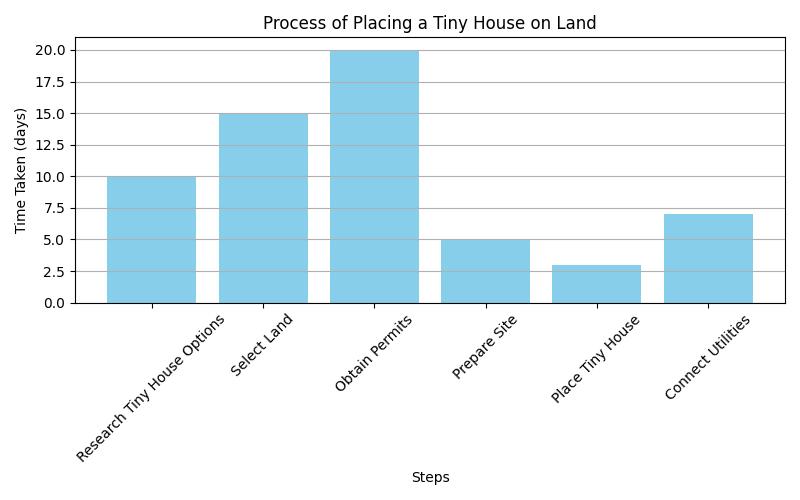
Steps for Tiny House Placement
Learn practical steps to successfully place a tiny house on land, ensuring compliance and sustainability.
– Understand local zoning laws to avoid legal issues and ensure your tiny house meets regulations like minimum lot size and setbacks.
– Choose land carefully, considering size, location, and access to utilities, such as water and electricity, while evaluating options for off-grid living.
– Secure necessary permits and prepare the site properly, including selecting a stable foundation and planning for utilities to create a functional and compliant living space.
If you’re wondering how to put a tiny house on land, you’re not alone. The tiny house movement has grown rapidly over the past decade, attracting individuals eager to embrace a minimalist lifestyle focused on sustainability, affordability, and freedom. With high housing costs and a growing commitment to environmental issues motivating many to downsize their living spaces, understanding the process of placing a tiny house on land is vital. This guide will walk you through researching local regulations, selecting suitable land, designing your home, and connecting utilities while sharing personal experiences and expert insights.
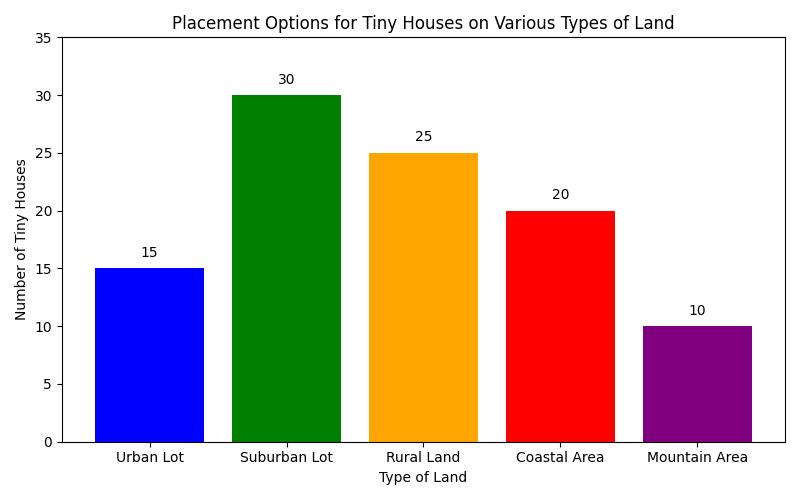
Understanding Tiny House Placement
Definition and Types of Tiny Houses
A tiny house typically measures less than 400 square feet and can be categorized as either mobile or stationary:
- Mobile Tiny Houses: Built on trailers, these homes can be moved easily, making them perfect for those who enjoy exploring new locations.
- Stationary Tiny Houses: These homes are permanently placed on land and can be constructed with traditional materials just like standard homes.
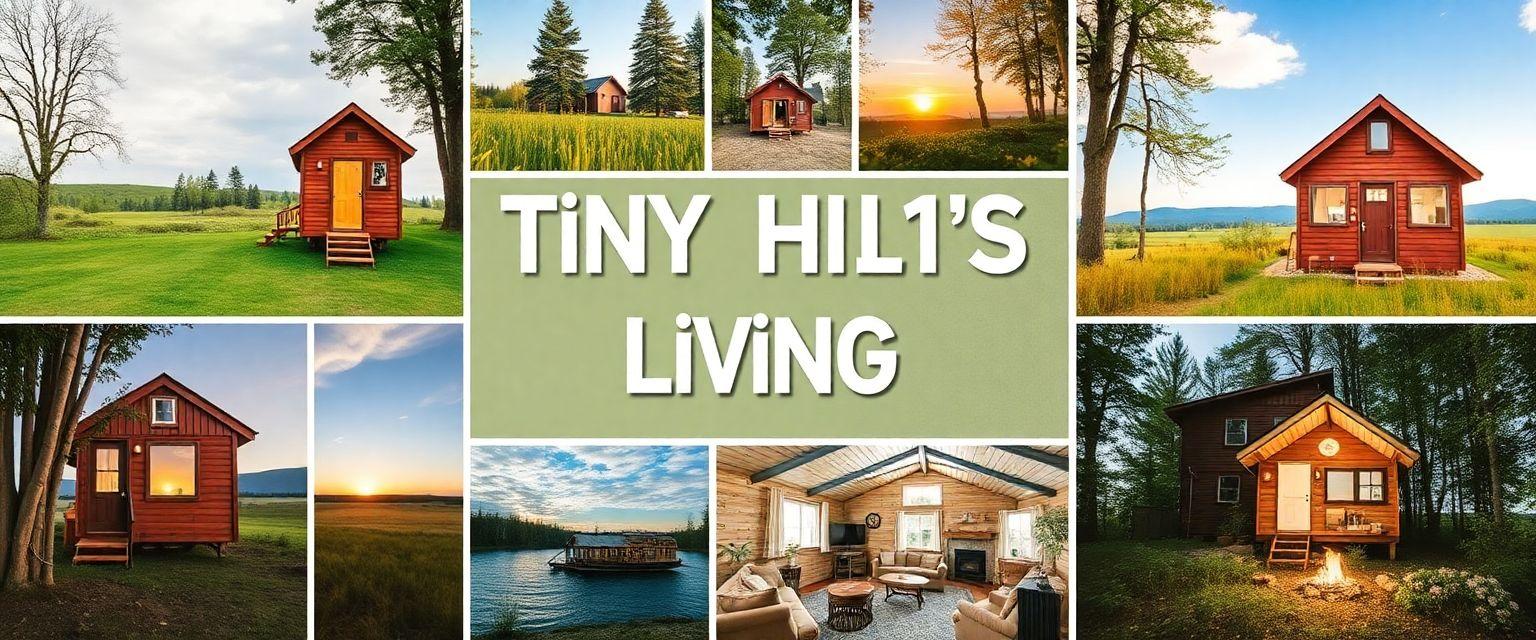
Benefits of Tiny House Living
Living in a tiny house offers many advantages:
- Affordability: Generally, tiny houses are cheaper to build and maintain than traditional homes, appealing to those wanting to reduce debt and save money.
- Sustainability: Many tiny house owners choose eco-friendly materials and energy-efficient designs, aligning with a growing focus on environmental responsibility.
- Minimalism: Tiny house living promotes a minimalist lifestyle, encouraging people to focus on what truly matters and eliminate the clutter of excessive possessions.
Research Local Zoning Laws and Regulations
Understanding Local Zoning Laws
Before placing your tiny house on land, you must follow local zoning laws. These regulations can vary significantly and often dictate what types of structures can be built and where.
- Common Regulations: Zoning laws may include minimum lot sizes, setback requirements (the distance your home must be from property lines), and restrictions on mobile or tiny houses.
Finding Zoning Information
To ensure compliance, you should:
- Research Local Government Websites: Most municipalities provide zoning maps and regulations online. For example, you can start at USA.gov to find your local government resources.
- Contact Local Authorities: If you have specific questions, reach out to your local planning office for detailed information tailored to your situation.
Potential Risks: Failing to understand local zoning laws can lead to fines or forced removal of your tiny house. Make sure to thoroughly research and verify all regulations in your area.
For more information on zoning laws, check out our detailed guide on how to put a tiny house on land.
Choose the Right Type of Land
Considerations for Selecting Suitable Land
When selecting land for your tiny house, consider these factors:
- Size: Ensure the lot is large enough for your tiny house and any outdoor space you want.
- Location: Think about proximity to work, schools, and amenities like grocery stores and healthcare facilities.
- Accessibility: Evaluate how easy it is to reach the property, especially if you have a mobile tiny house.
- Topography and Soil Quality: Assess the land’s slope and soil type; good drainage and stable ground are vital for your house’s foundation.
Pros and Cons of Different Types of Land
When choosing between rural and urban land, consider the following:
| Type of Land | Pros | Cons |
|---|---|---|
| Rural Land | Less expensive, more space | May lack immediate access to utilities and amenities |
| Urban Land | Better access to services | Higher costs, potential zoning restrictions |
Additionally, consider whether you want to buy the land outright or lease it. Leased land can be more affordable but may come with restrictions on what you can do with your tiny house.
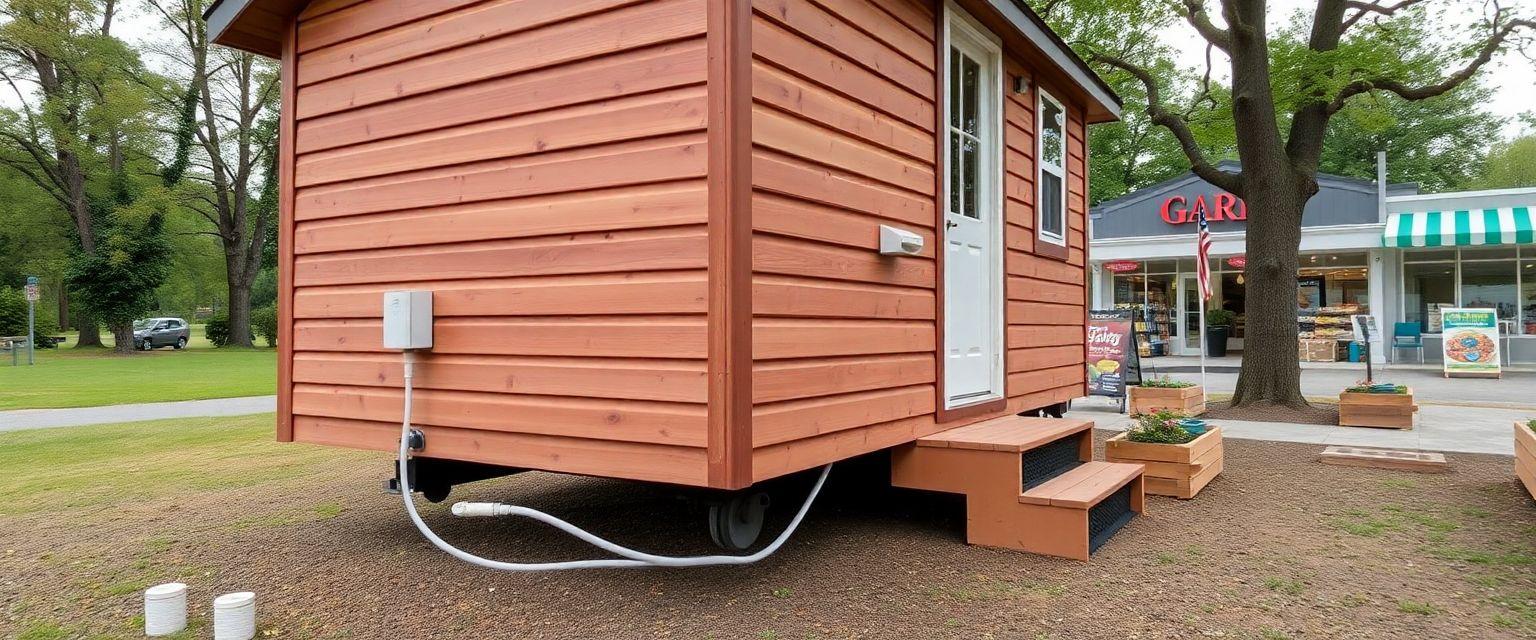
Evaluate Utilities and Amenities
Assessing Utility Availability
Before placing your tiny house, evaluate the availability of utilities:
- Water: Ensure the property has access to a reliable water source, such as city water, a well, or a rainwater collection system.
- Electricity: Investigate how to connect to local electricity or explore off-grid options.
- Sewage: Check local regulations regarding sewage disposal. A septic system may be necessary if the land isnt connected to municipal sewage.
- Internet Access: Many people find reliable internet essential. Research local providers to ensure connectivity.
Options for Off-Grid Living
If you prefer a more independent lifestyle, consider these off-grid options:
- Solar Panels: Install solar panels to harness renewable energy for your tiny house.
- Composting Toilets: These eco-friendly toilets minimize water use and can be easier to install than traditional plumbing systems.
- Rainwater Collection: Systems for collecting and filtering rainwater can provide a sustainable water source.
For more details on setting up utilities, explore our guide on how to put a tiny house on land.
Design Your Tiny House
Factors to Consider in Design
Designing your tiny house is an exciting yet critical step. Keep these factors in mind:
- Maximizing Space: Use multifunctional furniture, built-in storage, and open floor plans to optimize your square footage.
- Sustainable Materials: Consider reclaimed wood, bamboo, or eco-friendly insulation to reduce your environmental impact.
- Energy Efficiency: Incorporate energy-efficient appliances and fixtures to lower energy consumption.
Custom vs. Prefabricated Options
When building your tiny house, you have two main choices:
- Custom-Built Tiny Houses: Tailored to your specifications, these homes can reflect your personal style but may come with higher costs and longer lead times.
- Prefabricated Models: Manufactured in sections and delivered to your site, these homes typically offer quicker setup and can be more budget-friendly.
If you’re interested in design resources, check out our article on how to put a tiny house on land.
Plan for Site Preparation
Necessary Land Improvements
Before placing your tiny house, ensure the land is ready:
- Clearing and Leveling: Remove any debris, trees, or obstacles and level the ground to create a stable base for your home.
- Proper Drainage: Implement drainage solutions to prevent flooding and erosion, which may involve grading the land or installing drainage systems.
Foundation Considerations
Choosing the right foundation is vital for your tiny house’s stability:
- Skids: A simple and inexpensive option, skids allow for easy movement but may not be suitable for all climates.
- Piers: Elevate the house, reducing the risk of water damage and allowing for airflow.
- Concrete: Offers long-term stability, but can be more expensive and time-consuming to install.
For a detailed look at site preparation, visit our page on how to put a tiny house on land.
Obtain Necessary Permits
Steps to Apply for Building Permits
Applying for building permits can be daunting, but legal compliance is essential. Here’s a simple guide:
- Research Local Requirements: Check local regulations for specific documentation needed for your tiny house.
- Prepare Documentation: This may include site plans, building plans, and proof of ownership.
- Submit Your Application: Follow the submission process outlined by your local planning office.
- Pay Fees: Be ready to cover any application fees associated with your permit.
Understanding the Inspection Process
After your permit is approved, you will likely need to pass inspections during and after construction. To avoid common pitfalls, be mindful of:
- Incomplete Documentation: Ensure all required documents are submitted.
- Ignoring Local Codes: Familiarize yourself with local building codes to prevent costly mistakes.
For more information on obtaining permits, check out our article on how to put a tiny house on land.
Set Up a Foundation
Types of Foundations Suitable for Tiny Houses
Choosing the right foundation type is crucial for your tiny house’s longevity:
- Skid Foundations: Simple and easy to move, skids are ideal for temporary setups.
- Pier Foundations: Offer excellent ventilation and moisture protection but may require more preparation.
- Concrete Foundations: The most durable option, concrete foundations are excellent for permanent installations, especially in severe weather areas.
Importance of Stability and Compliance
A proper foundation ensures your tiny house remains stable and safe. Always check that your chosen foundation meets local building codes to avoid future issues.
For further details on foundation options, visit our guide on how to put a tiny house on land.
Transporting the Tiny House
Logistics of Moving a Tiny House
Transporting your tiny house to its new location requires careful planning:
- Considerations for Transportation: Ensure your route is clear of obstacles and suitable for large vehicles.
- Hiring Professionals vs. DIY: Depending on your comfort level, you may choose to hire a professional transport service or manage the move yourself. Weigh the costs and benefits before deciding.
Preparing the Tiny House for Transport
Before moving your tiny house, follow these tips to ensure safe transit:
- Secure Loose Items: Remove or secure items that could shift during transport.
- Check the Trailer: Ensure that the trailer is in good condition and that all lights and brakes work properly.
For more tips on transporting your tiny house, check our article on how to put a tiny house on land.
Installation of Utilities
Connecting to Local Services
Once your tiny house is on site, youll need to connect it to local utilities:
- Water and Sewage: Contact local service providers to set up connections. Be prepared for potential costs and installation timelines.
- Electricity: If you’re connecting to the grid, work with an electrician to ensure everything meets safety regulations.
Setting Up Off-Grid Systems
If you choose to live off-grid, consider these utility options:
- Solar Power Installation: Hire a professional or follow DIY guides to set up solar panels and batteries.
- Composting Toilets and Water Systems: Research safe installation practices for off-grid systems to ensure efficiency and compliance with local regulations.
For additional information on utility setups, explore our guide on how to put a tiny house on land.
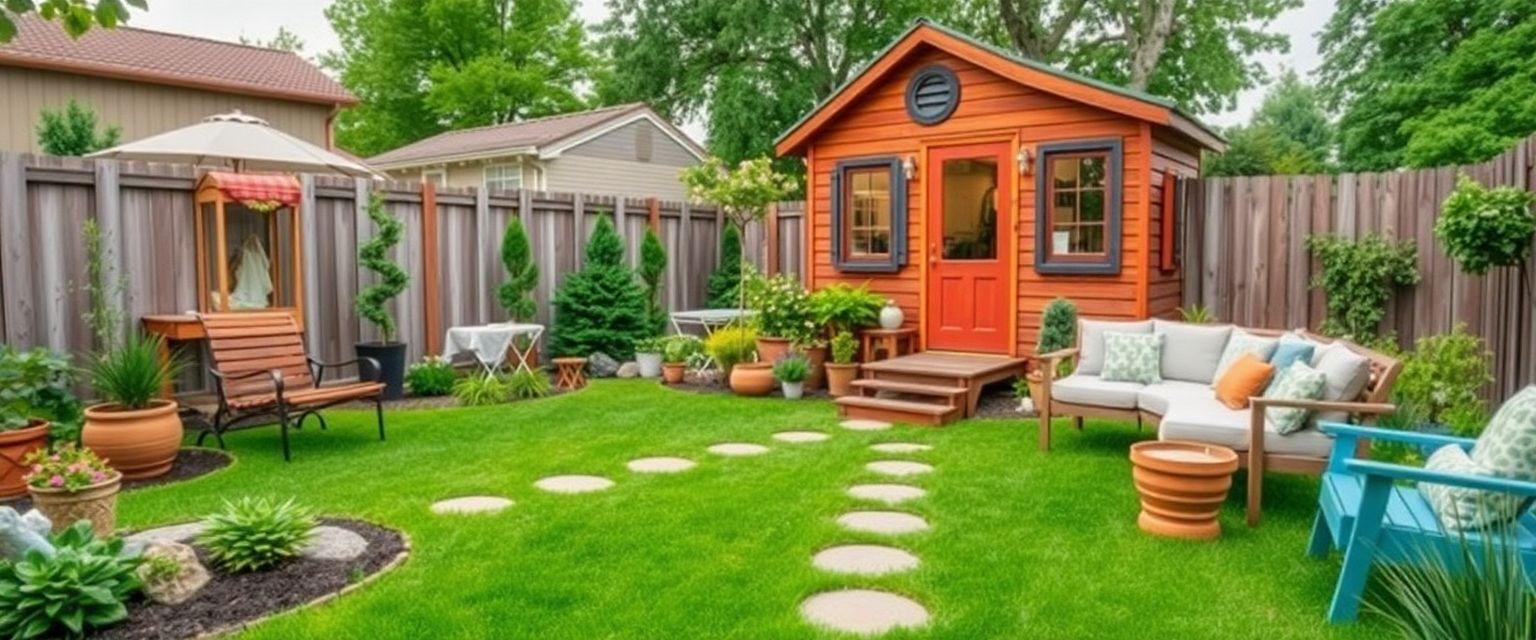
Landscaping and Outdoor Setup
Creating Functional and Aesthetic Outdoor Spaces
Once your tiny house is in place, dont forget about the outdoors:
- Functional Outdoor Areas: Create patios, gardens, or seating areas to enhance your living space.
- Aesthetic Landscaping: Use plants, flowers, and pathways to create an inviting exterior.
Integrating Eco-Friendly Features
Sustainable landscaping practices can reduce your environmental impact:
- Native Plants: Choose plants that thrive in your local climate to minimize water usage and maintenance.
- Efficient Irrigation Systems: Consider drip irrigation or rainwater collection systems for efficient watering.
For landscaping ideas, check out our article on how to put a tiny house on land.
Establishing a Community Connection
Engaging with Local Community and Tiny House Groups
Becoming part of a community can enhance your tiny house experience:
- Connecting with Other Tiny House Owners: Join local meetups or online forums to share experiences, tips, and resources.
- Support Networks: Building relationships with others in the tiny house movement can provide valuable support and encouragement.
Personal Story: Finding My Perfect Tiny House Land
When I decided to embrace the tiny house movement, I knew that finding the right piece of land was crucial to my new lifestyle. My name is Sarah, and two years ago, I traded my traditional home for a 200-square-foot tiny house on wheels. The journey began with extensive research into local zoning laws in my area, which turned out to be more complex than I anticipated.
The Zoning Challenge
I remember the day I visited my local planning office, armed with questions about where I could legally park my tiny home. The zoning officer, Mr. Jenkins, was incredibly helpful but pointed out that many residential areas had restrictions on tiny houses. After a few weeks of searching, I found a rural lot that met all the requirements and was just outside town, giving me the best of both worlds: privacy and access to amenities.
The Land Preparation
Once I secured the land, the next step was site preparation. I hired a local contractor to clear and level the area, ensuring proper drainage to prevent flooding. Watching the transformation was exciting; I envisioned my tiny home nestled among the trees. After setting up the foundation, which consisted of concrete piers, I felt more connected to this land that would soon be my home.
Community Connections
One of the most rewarding aspects of this journey has been connecting with a local tiny house community. I joined a Facebook group where fellow enthusiasts shared tips and support. I even attended a meet-up where I learned about sustainable landscaping practices that I could apply to my lot. This sense of community has been invaluable, and it reassured me that I was not alone in my quest for a simpler, more fulfilling life.
Through this experience, I learned that while the road to placing a tiny house on land can be challenging, it is also filled with opportunities for growth, connection, and joy. My tiny house is more than just a living space; it represents a lifestyle that prioritizes sustainability and community.
Collaborative Efforts for Group Land Purchases
Consider collaborating with others to achieve your tiny house dreams:
- Shared Land Ownership: Pool resources with like-minded individuals to purchase land together, reducing costs and fostering community.
- Successful Tiny House Communities: Research successful models of tiny house communities that have thrived through collaboration.
For more on community connections, visit our guide on how to put a tiny house on land.
Maintenance and Long-term Considerations
Regular Upkeep Tips
Maintaining your tiny house is essential for its longevity:
- Maintenance Checklist: Create a list of regular tasks, such as checking for leaks, cleaning gutters, and inspecting appliances.
- Seasonal Upkeep: Prepare your tiny house for seasonal changes by winterizing or checking for summer heat efficiency.
Planning for Future Needs
Anticipate changes in your lifestyle that may affect your tiny house living:
- Adapting to Changes: Consider how family size, work situations, or personal preferences may necessitate modifications to your tiny house.
- Potential Expansions: Plan for possible expansions or changes to your home while considering zoning regulations.
For maintenance tips and long-term planning, check our article on how to put a tiny house on land.
FAQs About Putting a Tiny House on Land
Common Questions and Concerns
As you navigate the process of putting a tiny house on land, you may have questions such as:
- What are the zoning restrictions in my area?
- How do I connect to utilities?
- What permits do I need?
Resources for Further Assistance
For specific concerns or challenges, refer to local resources or online communities. Websites like the American Tiny House Association can offer valuable insights and support.
Conclusion
Placing a tiny house on your land is an exciting journey that requires careful planning, thorough research, and community involvement. By following the steps in this guide and learning from experienced tiny house owners, you can confidently navigate the nuances of tiny house living and make your dream of affordable and sustainable living a reality!
Explore our other content for valuable resources, tips, and community connections to support your tiny house adventure. Embrace the tiny house movement and discover the freedom it offersyour new life awaits!
With over a decade of experience in sustainable architecture and community planning, the author is a recognized expert in tiny house living and land use. Holding a Masters degree in Urban and Regional Planning from the University of California, Berkeley, they have contributed to numerous projects promoting eco-friendly housing solutions. Their work has been published in journals such as the Journal of Sustainable Development and the American Planning Association’s Planning Magazine, where they discussed the benefits of tiny homes in urban settings.
Additionally, they have collaborated with local governments to develop zoning regulations that support tiny house communities, as highlighted in a study conducted by the Institute for Local Government. Their passion for sustainable living is reflected in their own experience of building a tiny house, which they documented in a popular blog that serves as a resource for aspiring tiny house owners. With a deep understanding of both the technical and community aspects of tiny house placement, the author provides invaluable insights for anyone looking to embark on this lifestyle.






